Transportation: The Future of Mobility
The Vikings were a fierce warring and sea faring tribe that are the subject of much read lore and famous for their travels. Their rise as traders, explorers and raiders helped expand their empire and was to a large extent a result of their expertise in their mastery of the seas. There are many other historical references where the movement of communities has resulted in economic development and prosperity of countries. Transport and its development has caused the world to shrink, increased interaction between countries, helped in trade and commerce and contributed to globalization. On the down side it contributes to air pollution and does require large tracts of land for operations.
Understanding Transportation
"Transportation is termed as movement of humans, livestock and objects from location A to B." Over the years the forms of transport that have evolved are based on the invention of simple but path breaking aspects like the wheel, steam power, simple machines and their evolution into bicycles, trains, aircrafts, ships and even rockets. From this evolved mass transit by train, air, ship and road. Today we transport even into space. Infrastructure-wise transport requires stations, airports, roads, sea ports. As cities have grown and the cost of mechanised movement has become prohibitively expensive the world is looking to a solution to make movement efficient both in terms of infrastructure, costing and time.
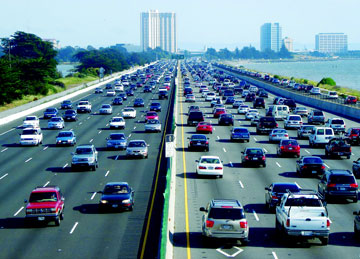 |
Many cities are now combining the various modes of transport under one hub that makes the system efficient at reduced costs. This kind of advancement has been termed as mixed - mode commuting. Today some methods like providing feeder buses at the beginning of a train journey and at its end make reaching ones destination much easier. Intermodal transport can be a combination like taking a taxi to a railway station, embark on the journey to reach an airport where a flight can be taken to the final destination. Apart from the infrastructure required for each kind of transport the critical aspect is the planning and execution of the changeover stations or what is now called an inter-modal transport interchange located in an interchange zone that is often a large area around the hub with multi-modal interchanges and public spaces.
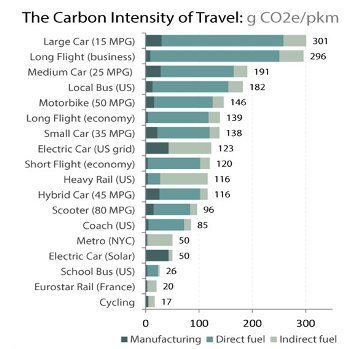 |
The advantage of this is that there is a lot of time saved which is otherwise squandered if the types of transport are located a distance away. Bad weather also hampers movement and having all these facilities under one roof makes movement much easier. One key positive of this idea is that it encourages the use of public transport that eases congestion in cities- inadvertently allowing the means to tackle climate change and providing sustainable modes of linking neighbourhoods, employment, education and travel. While developing this concept, cities have to keep in mind that the existing methods used are already overtaxed in overcrowded cities and that safety and security aspects are compromised.
Modes of transport
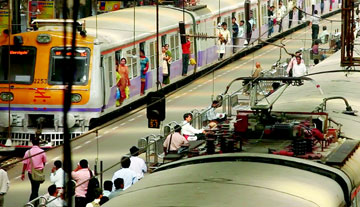 |
A good example of how different modes of transport work well when located adjacent to each other are Philadelphia's 30th Street Station. It is already a mass transit hub next to high density development, which combines Amtrak, commuter rail of Philadelphia, a bus stop, bicycle parking and proximity to the highway makes this design extremely practical as there is seamless switch between different modes of transport, as has been demonstrated by years of use. Noise was limited by locating the rails underground in densely populated areas. The designers also paid attention to visual aesthetics by making the main hall of the station spacious as well as anointed with ornamentation. The large area can house the huge volume of pedestrian traffic as well as some retail use. Since extra space seems to have been built in, as the modal hub grows, this area can be used for expansion without disturbing surrounding city buildings.Another success story is "Located in the heart of New York City, the PortAuthority Bus Terminal is the world's busiest busterminal, the region's primary ground transportationfacility, and the largest bus terminal in the United States".
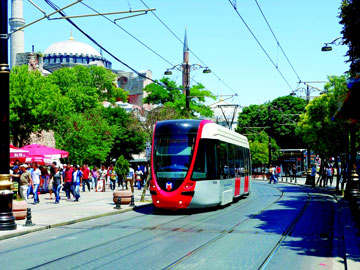 |
One lesson to be learnt from these example is that transit hubs are cost efficient when used for high density areas. It is detrimental when city trains have to run to suburbs with low density of population. So, one challenge is to move people from the peaceful city edges to the crowded city centre so that infrastructure services everyone at optimum cost. However city growth and transport has to grow hand in hand to avoid overcrowding and congestion. In the United States, According to a reportby the National Commission on intermodalTransportation (NCIT) – "intermodal connectivity in public transportis a challenging but critical need:In the passenger system, just as in the freight system,poor modal connectivity is a significant barrier tointermodalism. Too often, the bus station is 10 blocksfrom the commuter rail station, or the transit line stopsat the airport, but too far away to walk to theterminals."
Urban growth and Transit
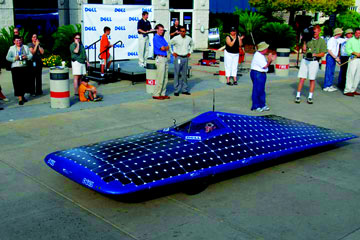 |
An example of how urban growth and transit can develop together and benefit each other is one that is very close to home. Yeshwanthpur, that till recently was a distant suburb of Bangalore leading to an industrial area is fast developing as a residential core. Supporting networks of retail, schools, hospitals and other relevant infrastructure have sprouted up alongside. With the completion of the Metro line, this area boasts the Yeswanthpur railway station, bus station and Cabs on demand. The growing higher density in this once remote area of Bangalore is ably supported by its multi modal transport system. Siemens, a pioneer in Integrated Mobility has various solutions for handling projected growth. Its report on 'Hubs of the Future' reports: "Transport hubs are extremely important because the increasingflow of passengers and goods has to be managed within and between urbancentres. As nodes, hubs must intelligently networkvarious transportation systems so that people and goods can betransported in a safe, efficient, and environmentally sound manner."
Sustainable Alternatives
Ryan Chin of the MIT Media Lab reported in 2013 about the sustainable alternatives available to us by 2050. He discusses electric vehicles, car sharing, automated mass transit and elevated buses that carry their passengers above the cars but run on rails. Finally he discusses that a re-think is in processregarding the urban structure of cities, "so that we don’t separate our living and working to the point that we need motorised transportation in the first place. It requires walk able, high-density, mixed-use neighbourhoods where the needs of every resident are met with less than a 20-minute walk." This theory is diametrically opposite of the proposition of building up high density city cores.
The latter seems to be the direction that most cities are taking. However the mobility challenge is a burning issue and if not addressed could cause economic losses. In the study of various cities some facts that have emerged are: Efficient mobility is the ability to move a person or freight to any place within the stipulated time; the system should be safe and secure; it will in the future be a combined use of land, water and space; and finally it should protect the fragile environment that is already ruined through toxic emissions with the help of appropriate integration of technology and innovative solutions.
Or, maybe the future is along the lines of Doctor and Writer Andrew Weil’s thoughts, "Fitting a walk into a busy life can be challenging, so I suggest walking rather driving to work or to run errands as often as you can - in other words, think of walking as alternative transportation."
- Swati Kiran.
References:
www.greatamericanstations.org/Stations/PHL/Station_view
Wikipedia
www.siemens.com/mobility
http://www.brainyquotes.com/